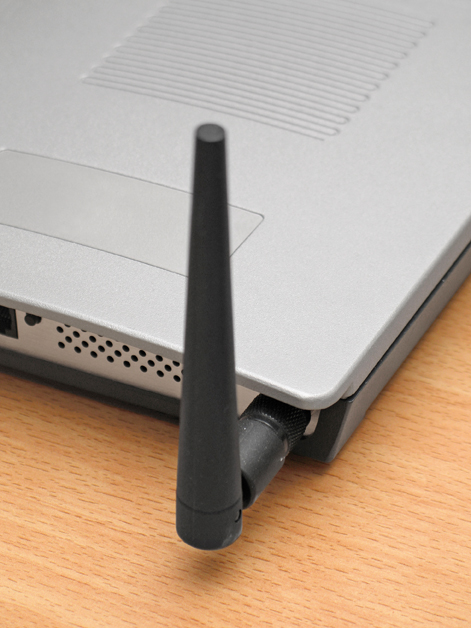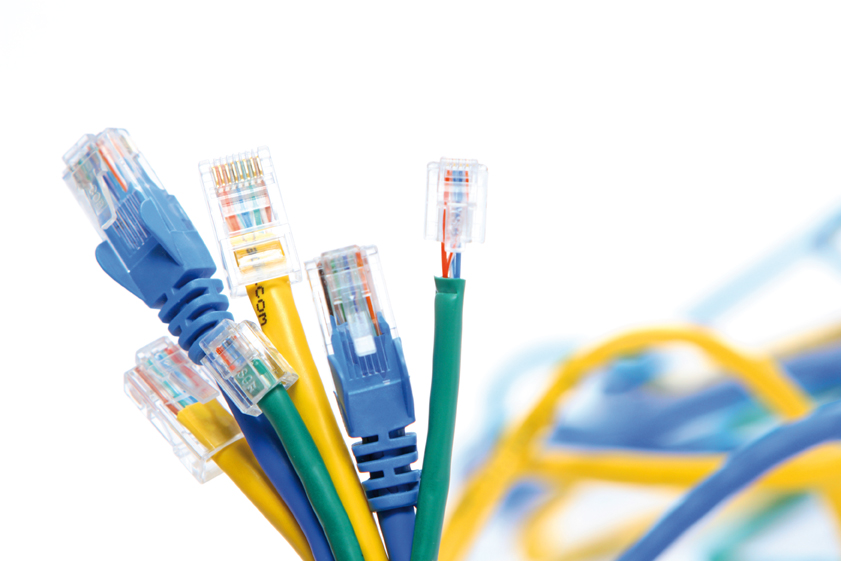Get Connected: Tips for Making the Most of Your Home Technology
 Today’s technology consumers are more connected than ever; through our home computers, TVs, smartphones and more, we are literally never more than a fingertip away from the Internet. Here is some information you need in order to purchase the right equipment for your home technology environment—without having to spend an entire day trying to communicate with a techie in one of the big-box electronic stores.
Today’s technology consumers are more connected than ever; through our home computers, TVs, smartphones and more, we are literally never more than a fingertip away from the Internet. Here is some information you need in order to purchase the right equipment for your home technology environment—without having to spend an entire day trying to communicate with a techie in one of the big-box electronic stores.
Your first consideration should be your broadband connection from an Internet Service Provider. This can be challenging because the types and speeds of Internet service can vary so widely within a small geographic area. At my own house, only DSL or satellite Internet service was available for several years, while my neighbors across the street were allowed to enjoy the benefits of cable Internet! Of the different types of residential Internet service available, cable Internet generally offers the biggest bang for your buck. In most markets, DSL is the cheapest, with slower download and upload speeds than cable Internet.
Satellite Internet is available from the satellite TV companies in the more rural areas where DSL and cable Internet connections may not be available; however, it is usually more expensive and less reliable than cable or DSL. Some cell phone companies are making a big push to compete in this market—and they are succeeding. There are some areas where cellular Internet service is one of the faster, more reliable technologies available for connecting your home network to the Internet, offering the convenience of mobility. In general, cellular Internet service tends to be more expensive than cable or DSL, and not as fast. Contact any and all service providers in or near your area for more information regarding serviceability, available speeds and prices for service.
 Once you have made a decision regarding your Internet connection from a service provider, the next consideration should be a router or a firewall. There is a wide variety of these devices with many different features available. It is helpful to understand the differences between these two options. In the case of SOHO technologies—that’s industry-talk for Small Office Home Office—they both route traffic between the Internet and your internally connected devices that comprise your home technology network. However, firewalls may offer additional features that protect your internal information, filter Internet content, and possibly allow you to create a secure connection to your office network. I cannot think of a scenario where I would recommend a router without a firewall.
Once you have made a decision regarding your Internet connection from a service provider, the next consideration should be a router or a firewall. There is a wide variety of these devices with many different features available. It is helpful to understand the differences between these two options. In the case of SOHO technologies—that’s industry-talk for Small Office Home Office—they both route traffic between the Internet and your internally connected devices that comprise your home technology network. However, firewalls may offer additional features that protect your internal information, filter Internet content, and possibly allow you to create a secure connection to your office network. I cannot think of a scenario where I would recommend a router without a firewall.
Basic routers are very inexpensive, but if you spend a bit more, you can purchase a firewall that offers a layer of protection between your information and the rest of the world. One often-overlooked feature available in some firewalls is content filtering. A few years ago, as parents we could install some software on the home PC to protect our children from Internet content; however, that is no longer enough. Our children have iPods, tablets and often PCs or laptops of their own. Content filtering by the firewall can be an effective means of managing what comes in or goes out of your home.
Thankfully, service providers will provide equipment that allows you to connect to almost any SOHO router or firewall. Such routers and firewalls come with an Ethernet-type Wide Area Network (WAN) port to create the connection between your router or firewall and the service provider equipment (in most cases, referred to as a modem). They also include one or more Ethernet-type Local Area Network (LAN) ports to connect your internal devices. There are a number of websites, such as www.cnet.com, that provide easy-to-understand consumer reviews on a wide variety of different brands and models.
The next consideration should be your network switch, a device that distributes the Internet connection to various devices throughout your home, while also connecting your internal devices. Outside of brand and price, there are only a few elements to consider: quantity, speed and power! Choose a switch that has at least as many Gigabit Ethernet ports as you have data connections in your home. I highly recommend your choice of switch include Power over Ethernet (PoE) functionality. This feature will allow you to connect surveillance cameras or wireless access points without the need for an electric receptacle in close proximity to where those devices are mounted.
 The last consideration in setting up basic home connectivity is a wireless access point (WAP). Many homes have a router or firewall with a built-in wireless controller to provide wireless connectivity throughout the house. Depending on the size and type of materials used to build the house, this may not provide adequate coverage throughout the entire home. I recommend a wireless access point that can be centrally located in the home in order to provide even coverage throughout. Many of these WAPs come in aesthetically pleasing styles that allow them to blend in with the décor of the home, creating a functional environment without detracting from the look and feel of the area. You may want to opt for a WAP that gives you the ability to configure multiple Service Set Identifiers (SSIDs). Every wireless connection has an SSID; this is simply the name of the wireless network that is displayed when your laptop or smartphone detects a wireless connection within signal range. Having multiple SSIDs configured would allow you to create a more secure wireless network for your own use, while allowing guests to connect to another wireless network that only provides Internet access—all using the same WAP.
The last consideration in setting up basic home connectivity is a wireless access point (WAP). Many homes have a router or firewall with a built-in wireless controller to provide wireless connectivity throughout the house. Depending on the size and type of materials used to build the house, this may not provide adequate coverage throughout the entire home. I recommend a wireless access point that can be centrally located in the home in order to provide even coverage throughout. Many of these WAPs come in aesthetically pleasing styles that allow them to blend in with the décor of the home, creating a functional environment without detracting from the look and feel of the area. You may want to opt for a WAP that gives you the ability to configure multiple Service Set Identifiers (SSIDs). Every wireless connection has an SSID; this is simply the name of the wireless network that is displayed when your laptop or smartphone detects a wireless connection within signal range. Having multiple SSIDs configured would allow you to create a more secure wireless network for your own use, while allowing guests to connect to another wireless network that only provides Internet access—all using the same WAP.
Armed with this information, you can now choose the equipment that will allow you to complete this layer of your home technology environment. Contact a professional integrator with your questions or concerns with making these important decisions or for assistance with installation.






